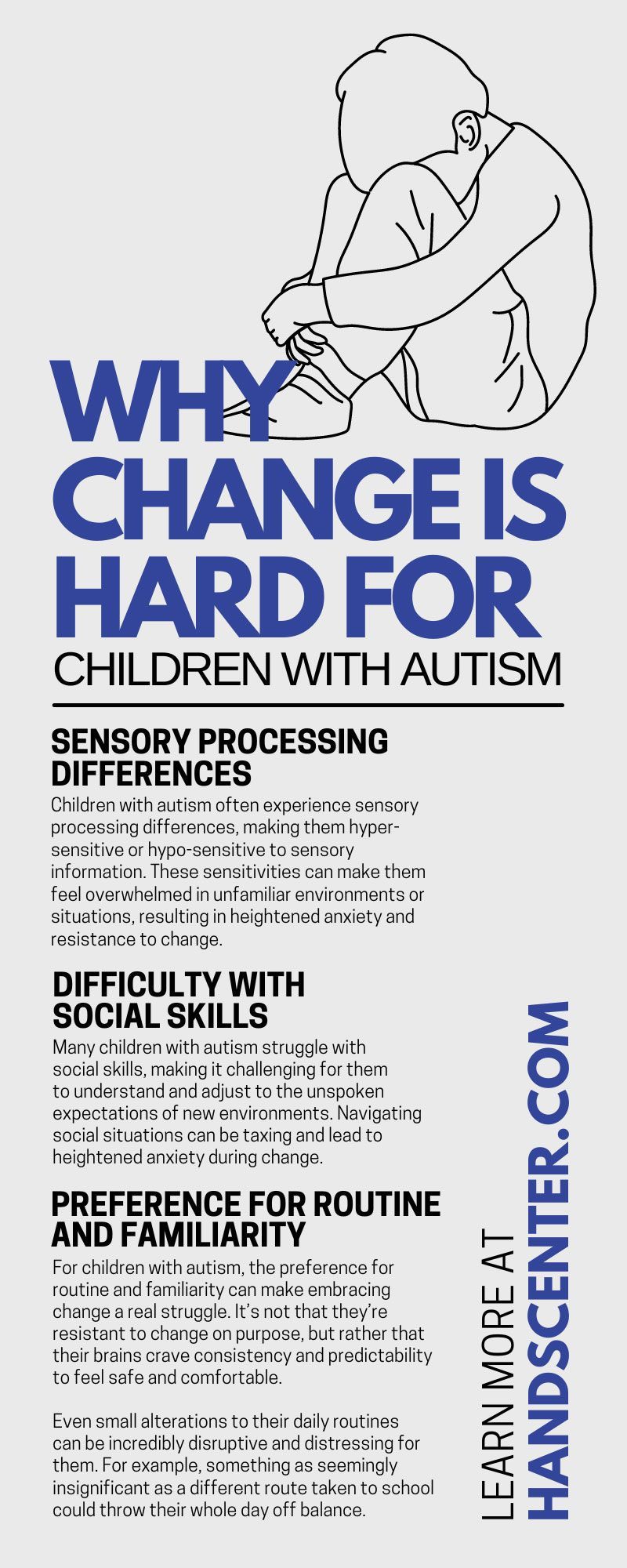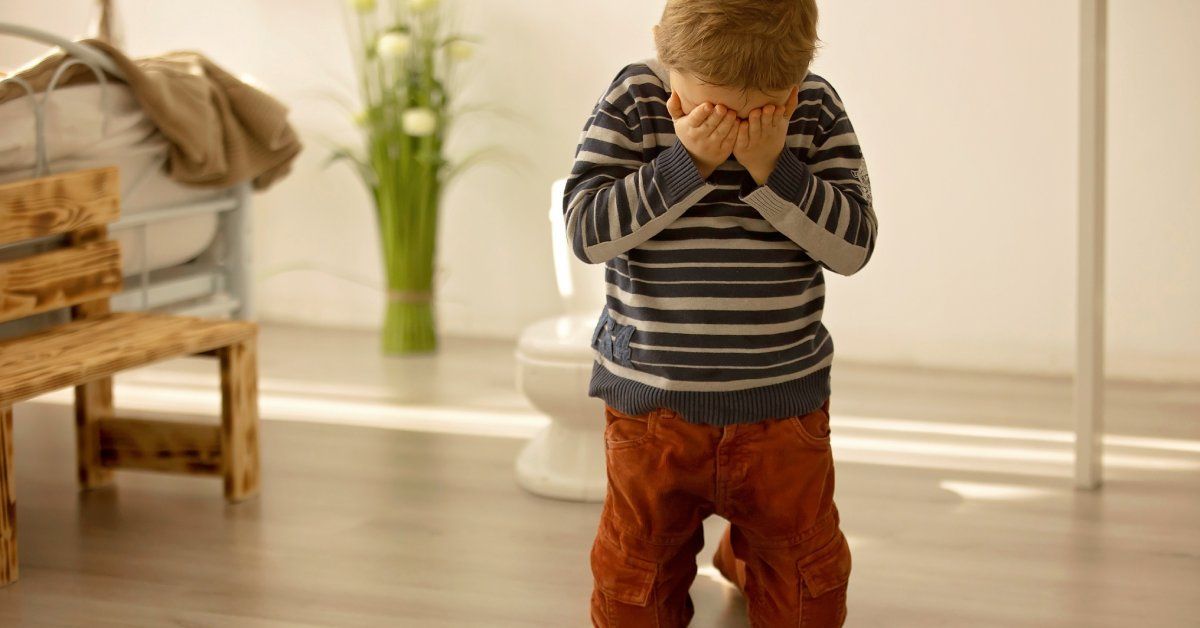Why Change Is Hard for Children With Autism
As caregivers and parents, we want what’s best for our children. We aim to provide them with stability, support, and comfort. However, life is filled with big and small changes, whether we like it or not. Change can be especially difficult for children with autism who thrive on predictability and routine.
While the desire to avoid discomfort is understandable, shielding our kids from all change ultimately does more harm than good. With patience and understanding, we can help them build resilience and skills for adapting to life’s inevitable surprises.
Keep reading to understand better why change is so challenging for children with autism. With this information, you can use helpful strategies that will help ease transitions.
Why Is Change Difficult for Children With Autism?
Sudden change can be a challenging part of life for everyone, but for children with autism, it can be particularly confusing and distressing. Autism is a neurological condition that can influence how a child interacts with their surroundings, including social cues and sensory input. Adapting to new environments or situations can be an especially difficult task, leading to heightened anxiety and resistance to change.
Explore a few reasons why change is more difficult for children with autism.
Sensory Processing Differences
Children with autism often experience sensory processing differences, making them hyper-sensitive or hypo-sensitive to sensory information. These sensitivities can make them feel overwhelmed in unfamiliar environments or situations, resulting in heightened anxiety and resistance to change.
Difficulty With Social Skills
Many children with autism struggle with social skills, making it challenging for them to understand and adjust to the unspoken expectations of new environments. Navigating social situations can be taxing and lead to heightened anxiety during change.
Preference for Routine and Familiarity
For children with autism, the preference for routine and familiarity can make embracing change a real struggle. It’s not that they’re resistant to change on purpose, but rather that their brains crave consistency and predictability to feel safe and comfortable.
Even small alterations to their daily routines can be incredibly disruptive and distressing for them. For example, something as seemingly insignificant as a different route taken to school could throw their whole day off balance.
Executive Functioning Challenges
Difficulty in executive functioning—such as organizing, planning, and initiating activities—makes it harder for children with autism to adapt to new patterns and routines. This challenge can make any change feel overwhelming and unmanageable.
The Importance of Parental Involvement
Parental involvement is crucial in managing the impact of change on children with autism. Parents are the primary caregivers with the most intimate knowledge of their child’s behaviors, preferences, and triggers. This unique understanding enables them to provide support that respects the child’s comfort and needs.
Moreover, the consistency and security of parental presence can significantly reduce anxiety during transitions. Active participation of parents in therapy sessions and their collaboration with educators and therapists will foster a consistent approach to handling changes. This consistency across various facets of the child’s life reinforces learning and adapts to new routines or environments that are less daunting.
Parental engagement in the child’s journey helps the child with autism and provides the parents with better understanding and coping mechanisms, fostering a supportive and nurturing environment for the child.
Tips To Make Transitions Easier for Children With Autism
Transitions can be one of the hardest parts of the day for children with autism. Whether it’s moving from free play to mealtime or transitioning from one activity to the next, changes in routine and environment can trigger anxiety, meltdowns, and challenging behaviors.
As parents and caregivers, we want to help our children feel secure and in control during transitions. Implement a few strategies to help ease the anxiety of swift changes.
Provide Visual Schedules and Social Stories
Visuals such as schedules, calendars, and social stories can help children with autism know what to expect, reducing anxiety and allowing them to feel prepared for upcoming changes. Create visual representations of their routines or explain changes through social stories that outline the steps of a new situation in a simple, understandable manner.
Gradual Exposure to Change
Gradually introducing changes allows the child to become familiar with the new environment, person, or routine. What might seem like a minor change to us can feel like a seismic shift to a child on the spectrum. That’s why gradual exposure is so effective.
Slowly introducing new experiences into a child’s routine gives them the time and space to adjust at their own pace. Over time, they’ll build up resilience and confidence so that when bigger changes come along, they’ll have the tools to handle them.
Create a Safe Space
Establish a calming and familiar space where the child can retreat in times of heightened anxiety due to change. This space should have comforting items such as their favorite toys, sensory tools, or even familiar scents and sounds.
Consistent Communication
Maintain open communication with your child, addressing their concerns and feelings about the change. Create an environment where they feel comfortable expressing themselves. Also, keep other caregivers and educators informed of the planned changes.
Reinforcement and Rewards
Reinforcement and rewards are essential tools that can help children with autism cope with change. Using this strategy, parents and caregivers can help give children with autism the confidence and motivation they need to adapt to new and unpredictable situations. Provide your child with positive feedback and encouragement when they exhibit positive behaviors.
For example, suppose a child with autism struggles to adjust to a new school. In that case, parents can offer praise and rewards every day the child successfully attends school without becoming overly anxious or upset. This positive reinforcement can help the child to feel more confident and motivated to continue trying.
Rewards can also be a powerful tool for children with autism, as they provide tangible and immediate incentives for positive behavior. For example, parents can offer small rewards, such as stickers or tokens, every time the child completes a task or follows a particular routine.
Overcome the Challenge of Change
We can see that change can be difficult for children with autism. To learn about helping your child cope with changes in routine, read more here. From the difficulties they face in processing sensory information to their struggles with social interactions, these challenges can make them feel overwhelmed and anxious. However, with the help of autism therapy centers, children with autism can learn to cope with change positively and healthily. For more information about how HANDS Center can help, please get in touch with us or visit our North Carolina locations.







